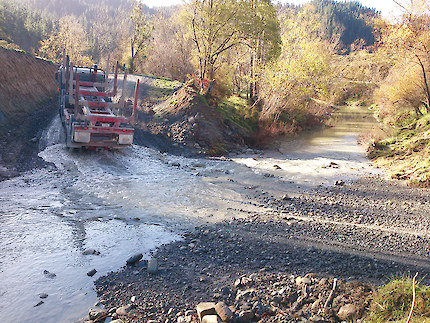Ford crossings can be natural riverbeds or ones with a concrete pad. Fords are generally used on low volume roads to cross broad, shallow rivers and where alternative river crossings are not feasible. Fords can create much more sediment than other types of river crossings. Fords are the least preferred river crossing.

- A natural ford with low vehicle use
- The riverbed is hard and stable
- Clean rock fill was added to strengthen the riverbed
- Fish passage is not affected

- Concrete pad ford built on a stable low gradient site
- The concrete pad extends to medium river flow
- Crossing meets fish passage rules

- Natural crossings generate more sediment than concrete pads
- Sediment comes from tyres in the river and water washing up the road
- Steep approaches create ongoing sediment problems

- The pad has concrete aprons
- There are cut-outs and sediment control on ford approaches
- Fish passage may not be met when the river is low, as water is spread thinly across the concrete, which is also too smooth for fish to swim across